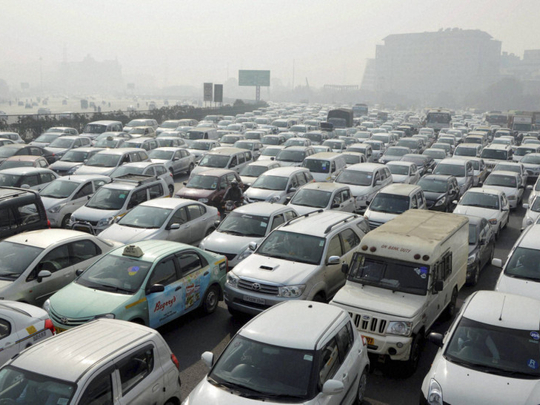
The real test of Delhi’s odd-even anti-pollution rule is yet to come but by all standards it has had a great beginning. Monday was the first real working day after the announcement, and Chief Minister Arvind Kejriwal’s idea appears to have succeeded — perhaps his first meaningful initiative since he took office, in stark contrast to his record in office thus far.
Many would argue that this odd-even plan to solve a complex problem is populism at its worst. Car rationing probably will not make an iota of difference to Delhi’s air quality. Yet, it has galvanised the public. It perhaps says more about the people of the state than its chief minister and if Delhi, which is rumoured to have the most irascible road warriors in the world, can put personal inconveniences aside for a public good there is something to cheer in the New Year. And not just in fighting pollution: If Delhi can display such extraordinary self-regulation and civic maturity, imagine what India can do to overcome the challenges in public sanitation.
The larger question however is: Has civil society and the ordinary citizen taken charge of public policy and even driving it because the political class has abdicated its responsibilities?
Parliament and the legislative mechanism is moribund and the public at large has perforce stepped into the breach. Don’t forget the rape laws that were recently passed were largely due to pressure from civil action groups. The Nirbhaya case of 2012 brought civil activists from around the country to the fore and Anna Hazare’s movement against corruption gave rise to the Aam Aadmi Party (AAP). It is a different matter that the high ideals unleashed during these campaigns ran aground, but it is important to ask whether public policy formulators and civil society have slowly begun to work in tandem, opening up interesting possibilities as well as some ambiguities.
Historically, there has largely been an adversarial relationship between the state — which is fundamentally charged with the responsibility of formulating public policy — and civil society. Mass movements birthed in protest and agitational politics have generally been the springboard for civil action groups, at least in India. Is this changing? Hitherto, fighting for caste-based concessions or furthering sectarian interests has been the catalyst to power these campaigns, but is this giving way to a wider communitarian spirit?
Public Affairs Centre [PAC] Bangalore, a non-profit organisation with a mandate to improve governance, postulates that while the state has always endeavoured to be strong and all-pervasive, new developments are arising out of a potent combination of the information revolution and civic spirit, a surge of self-determinism has given a free rein to new enclaves of vested interests that were hitherto unknown. And these power centres wedded not to any ideology or caste or communal group, but to public good, are challenging the state. This is a paradox of sorts for, in a vibrant, liberal democracy, the citizens cannot be in conflict with the state for it is this very framework that gives the citizenry its sustenance, its rights, its identity and above all — the legal edifice to earn its livelihood without fear or favour. PAC says the essence of democracy lies in the ability of the individual to contribute to the general will and the state in turn contributes to this process by providing the institutions as well as laying down the constraints within which the aggregation of the individual values can take place in a reasoned social choice for all.
In an ideal world, this would be true, for a liberal democracy is committed to this synthesis, but in practice, this has not happened. Why? Primarily because the political class has consistently fallen well behind this ideal, whereas civil society has surged ahead, it has become smarter and stronger. Moreover, social media is a huge force multiplier and events in one part of the world impact immediately the happenings elsewhere. Cases of discrimination, racism, terror and bigotry are instantly reported and picked up on Twitter, YouTube and facebook posts. Indeed, the net is awash with news and views and anyone anywhere can access it.
Demographics is another differentiator and in India, the demographic bulge has drawn the youth to these social causes, posing a serious challenge to the state. The youths are indeed at the vanguard for change — not the state. The roles have been switched. While in the past, the state led and the citizens followed, now, the cutting edge of public policy formulations is in the hands of these new enclaves of power. This transformation is, however, glacial and what we are seeing is just the green shoots. It is far from clear whether this power shift is here to stay. The tribulations of AAP and its ugly morphing, from a child of civil society into just another political party pandering to its electorate, is a warning that nothing much has changed.
That said, the Delhi experiment and how it pans out will be a harbinger for the future. And the public is saying that it is ready to accept hard choices for a better tomorrow.
Ravi Menon is a Dubai-based writer, working on a series of essays on India and on a public service initiative called India Talks.









